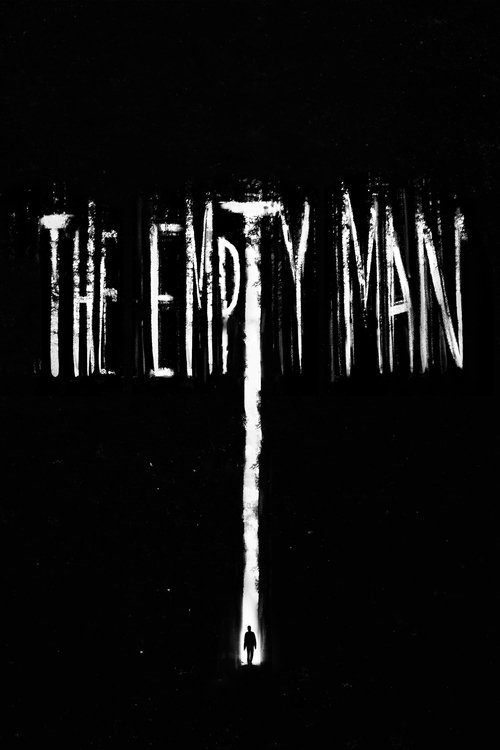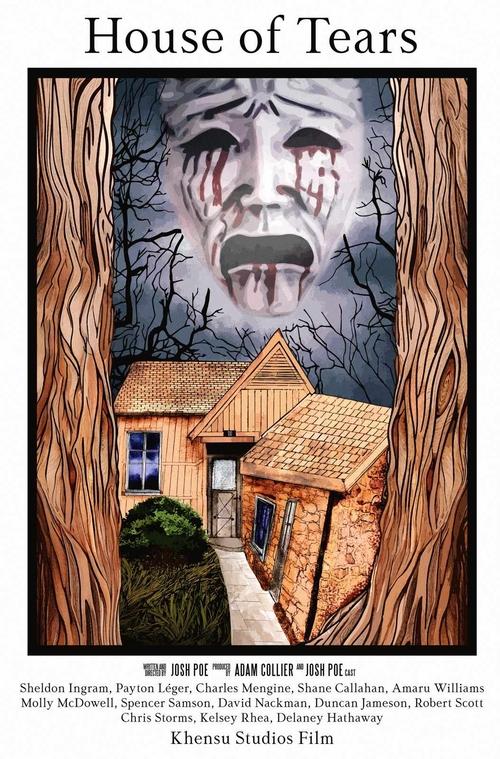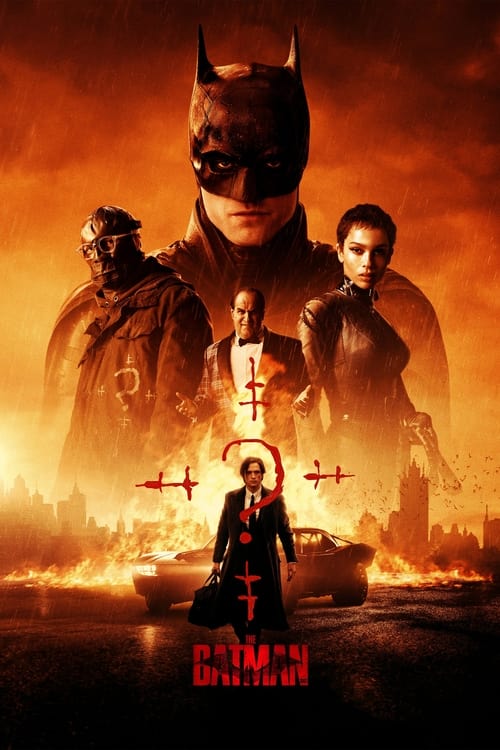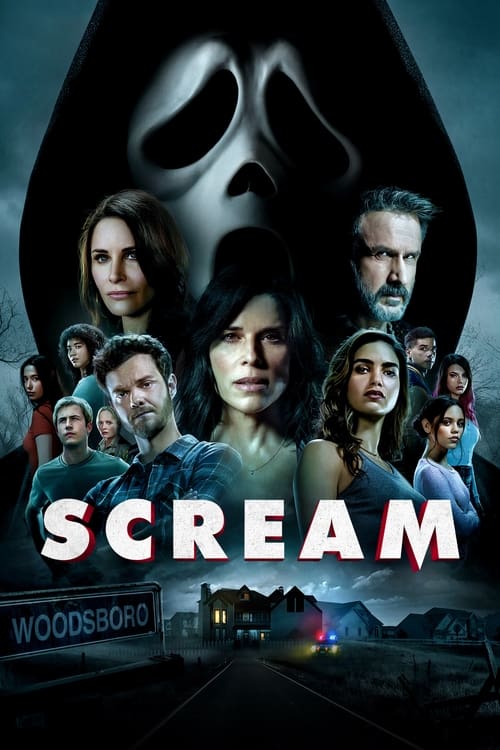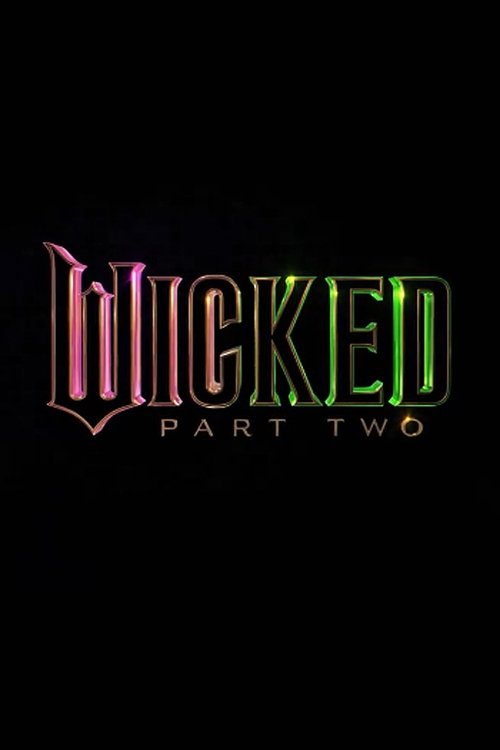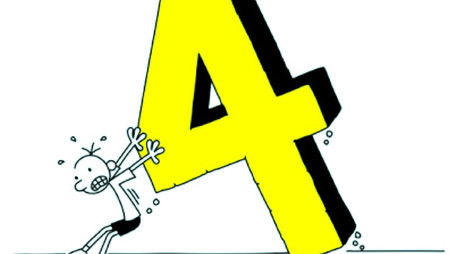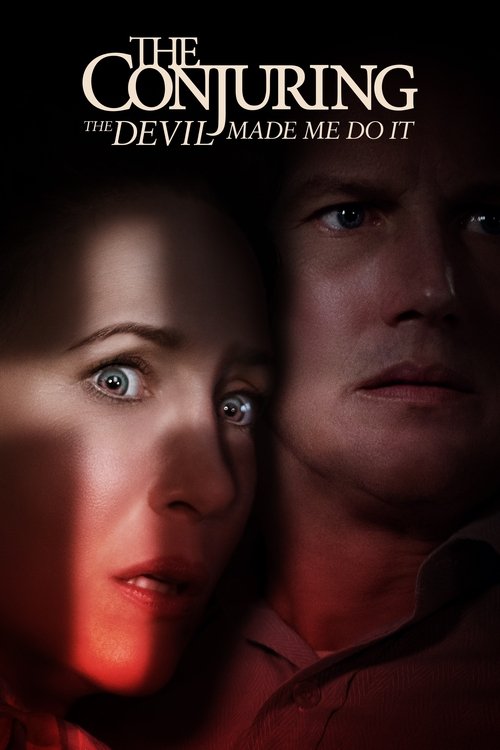
Ask Your Own Question
What is the plot?
In the dense, shadowed woods near a remote cave, a group of four hikers stumbles upon a grotesque and unsettling sight: a giant human skeleton, unnaturally large and ancient, sprawled within the dark cavern. The atmosphere is thick with unease as one hiker, overwhelmed by a creeping dread, begins to hallucinate. His vision distorts--whispers and shadows haunting his mind--until the terror drives him to a desperate act. He climbs a tree and hangs himself, the forest swallowing his final, silent scream. This grim tableau sets the tone for the story to come: a supernatural horror rooted in a malevolent force known as the Empty Man.
The narrative shifts to St. Louis, where James Lasombra, a former police detective, wrestles with the heavy weight of personal tragedy. It has been about a year since the devastating car accident that claimed the lives of his wife Allison and their son Henry. James carries the scars of grief, his life a quiet, fractured echo of what once was. He keeps a protective eye on Amanda Quail, a troubled teenage girl whose strained relationship with her mother Nora has left her adrift. James's concern for Amanda is more than casual; he has become a surrogate figure in her life, a tether to stability amid her turmoil.
One day, Nora calls James in a panic: Amanda has disappeared. James arrives at Amanda's house, where the atmosphere is thick with foreboding. On the bathroom mirror, smeared in blood, is a chilling message: "The Empty Man made me do it." This cryptic phrase hints at forces beyond the natural, and James's instincts propel him into a private investigation, even as official police inquiries begin.
James's first stop is Amanda's high school, where he seeks out her friends. He finds Devara Walsh, who reluctantly shares a local urban legend. The Empty Man, she explains, is a sinister figure summoned by blowing into an empty bottle on a particular bridge. The ritual is simple but terrifying: on the first day after summoning, you hear the Empty Man; on the second, you see him; and on the third, he comes for you. Amanda and her friends--Brandon, Julianne, Meyer, Lisa, and Duncan--had performed this ritual days before her disappearance.
Driven by this knowledge, James visits the bridge. Beneath it, a grisly scene awaits: the bodies of Amanda's friends hang lifeless, their deaths ruled suicides but marked by a sinister signature. Scrawled nearby is the same bloodied phrase, "The Empty Man made me do it." The horror of this discovery deepens the mystery--Amanda is missing, but her friends are dead, victims of a contagion of despair and madness.
James's investigation leads him to the Pontifex Institute, a self-help organization that masks a darker purpose. The cult-like group, led by Arthur Parsons, presents itself as a path to enlightenment, but James quickly senses a malevolent undercurrent. Parsons speaks with unsettling calmness, hinting that James has been there before, though James knows he has not. The cult's influence spreads like a virus, infecting minds and twisting reality.
As James delves deeper, his grip on reality begins to falter. He hears footsteps echoing through empty hallways, glimpses shadows where none should be. Devara, the last surviving friend, retreats to a spa to escape the mounting terror. There, in the suffocating heat of a sauna, she succumbs to an unseen force. The steam thickens, and through the haze, the Empty Man appears. In a harrowing moment, Devara stabs herself repeatedly with scissors, her death a brutal, self-inflicted surrender to the entity's power.
Haunted and desperate, James kidnaps Garrett, a cult member, and demands answers. Under brutal interrogation, Garrett reveals that the Empty Man communicates through a man named Paul, who lies in a coma in a hospital. Paul serves as the current vessel for the entity, a living conduit between the cult and the supernatural force. This revelation sends James to the hospital, where he finds Amanda alive but changed, hidden in Paul's room.
Amanda's presence is a shock, but her words are more so. She tells James that Paul is dying from the strain of harboring the Empty Man. The cult needs a new vessel, and that vessel is James himself. The most staggering revelation comes when Amanda explains that James is not real in the way he believes. He is a tulpa--a thoughtform created by the cult through collective belief and ritual. His memories, his grief, his identity--all fabricated to forge a connection strong enough for the Empty Man to inhabit.
James's sense of self begins to unravel as Amanda's words sink in. His memories flicker and fade, like a candle guttering in a storm. The pain, the fear, the anger that have defined him are not his own but the constructs of the cult's design. He has only existed for a few days, a puppet for a cosmic horror.
In a climactic descent into madness, James breaks down and finds himself in a limbo-like plane, a surreal and nightmarish landscape where the Empty Man pursues him relentlessly. The entity is a shifting, formless terror, embodying the void and the absence of self. James runs, but the chase is inevitable. The Empty Man catches him, merging with his body in a moment of terrifying possession.
Back in the hospital, James executes Paul, ending the previous vessel's life to complete the transfer. The hospital staff surround him, their faces blank but reverent, bowing to the new Empty Man. James Lasombra, the man who sought to uncover the truth, has become the very embodiment of the entity he feared. The cycle of horror continues, the cult's dark influence spreading through him as the new vessel.
The film closes on this chilling tableau: James, no longer a man but a vessel for an ancient, malevolent force, standing among those who serve it. The Empty Man's legend lives on, a nightmare born of belief and despair, now embodied in the hollow shell of James Lasombra.
What is the ending?
In the ending of "The Empty Man," the protagonist, James Lasombra, confronts the cult responsible for the disappearance of his friend and the chaos surrounding the Empty Man phenomenon. He ultimately discovers that he has become a vessel for the Empty Man, leading to a tragic conclusion where he sacrifices himself to save others, but the cycle of the Empty Man continues.
As the film approaches its climax, we find James Lasombra, played by James Badge Dale, deep in the heart of the cult's activities. The atmosphere is thick with tension as he navigates through a dark, abandoned building, the remnants of the cult's rituals evident in the eerie surroundings. Shadows flicker across the walls, and the air is heavy with a sense of dread. James is driven by a desperate need to find his missing friend, Amanda, and to understand the horrifying events that have unfolded around him.
In a dimly lit room, James encounters the cult leader, who reveals the true nature of the Empty Man. The leader explains that the Empty Man is not just a myth but a real entity that feeds on despair and fear. As James listens, he feels a growing sense of dread, realizing that he is not just an investigator but has been drawn into the very fabric of the cult's dark rituals. The leader attempts to manipulate James, suggesting that he can embrace the Empty Man and gain power, but James resists, grappling with his own internal demons.
As the confrontation escalates, James is faced with a choice: to succumb to the Empty Man or to fight against it. The cult members surround him, chanting and invoking the Empty Man, creating a cacophony of voices that echoes in his mind. In this moment, James experiences a profound internal struggle, torn between the allure of power and the desire to protect those he loves.
In a pivotal scene, James realizes that Amanda is not just a victim but has also been ensnared by the cult's influence. He finds her in a trance-like state, caught between the world of the living and the Empty Man's grasp. The emotional weight of this moment is palpable as James fights to reach her, his heart racing with fear and determination. He understands that to save Amanda, he must confront the Empty Man within himself.
In a climactic showdown, James embraces the darkness, becoming a vessel for the Empty Man. The transformation is both terrifying and tragic, as he loses his sense of self while gaining the power to confront the cult. The final confrontation is chaotic, filled with visceral imagery of the cult's rituals and the manifestation of the Empty Man's influence. James battles not only the cult members but also the entity that has taken root within him.
As the dust settles, the fate of the main characters becomes clear. James, now fully consumed by the Empty Man, sacrifices himself in a final act of defiance, hoping to break the cycle of despair that the cult perpetuates. His sacrifice is both a release and a curse, as the Empty Man continues to exist, ready to ensnare new victims. Amanda, freed from the cult's grasp but forever changed by the experience, is left to grapple with the aftermath of the horrors she has witnessed.
The film concludes with a haunting sense of inevitability, as the cycle of the Empty Man is implied to continue, leaving viewers with a chilling reminder of the darkness that lurks within and the fragility of the human spirit. The final scenes linger on Amanda's face, reflecting a mix of relief and sorrow, as she walks away from the remnants of the cult, forever marked by her encounter with the Empty Man.
Is there a post-credit scene?
Yes, "The Empty Man" features a post-credit scene that adds a chilling layer to the film's narrative.
As the credits roll, the scene opens in a dimly lit room where a group of individuals is gathered. They are seated in a circle, engaged in a ritualistic discussion. The atmosphere is thick with tension and an unsettling sense of purpose. The camera focuses on a woman who appears to be leading the group, her demeanor calm yet eerie.
She speaks about the Empty Man, emphasizing the importance of belief and the power it holds. Her words are laced with a sense of foreboding, suggesting that the Empty Man is not just a myth but a real entity that can be summoned through collective faith.
The scene then shifts to a close-up of a figure standing in the shadows, partially obscured. The figure's presence is menacing, hinting at the potential for chaos and horror that the Empty Man represents. The camera lingers on this figure, creating a sense of dread as the woman's voice continues to echo in the background, reinforcing the idea that the Empty Man is always watching, always waiting.
This post-credit scene leaves viewers with a haunting impression, suggesting that the cycle of fear and belief surrounding the Empty Man is far from over, and that the threat he poses is still very much alive.
What is the significance of the Empty Man cult in the story?
The Empty Man cult plays a crucial role in the narrative, representing a dark and mysterious force that influences the characters' actions and beliefs. The cult is centered around the idea of summoning the Empty Man, a supernatural entity that is said to bring about despair and death. The cult's rituals and the psychological manipulation of its members create a pervasive atmosphere of fear and uncertainty, driving the protagonist, Detective James Lasombra, to uncover the truth behind the cult's activities and its connection to the disappearance of a young woman.
How does the character of James Lasombra evolve throughout the film?
James Lasombra begins as a disillusioned former police officer, haunted by the loss of his wife and struggling with his own demons. As he investigates the case of the missing girl, he becomes increasingly obsessed with the Empty Man phenomenon. His journey is marked by a descent into paranoia and existential dread, as he confronts not only the cult but also his own grief and guilt. This evolution culminates in a confrontation with the Empty Man, forcing him to face the darkness within himself and the choices he has made.
What role does the character of Amanda play in the plot?
Amanda is a pivotal character whose disappearance sets off the chain of events that drives the narrative. She is initially portrayed as a troubled young woman who becomes involved with the Empty Man cult. Her character embodies the themes of vulnerability and manipulation, as her search for meaning leads her deeper into the cult's grasp. As James investigates her case, Amanda's fate becomes intertwined with his own, revealing the tragic consequences of the cult's influence and the impact of her choices on those around her.
What are the key elements of the Empty Man's mythology as presented in the film?
The Empty Man's mythology is steeped in folklore and psychological horror, characterized by a series of chilling rituals and the idea that the Empty Man can be summoned through a specific sequence of events. The film presents a narrative that intertwines urban legends with psychological terror, exploring themes of belief and the power of suggestion. Key elements include the notion that the Empty Man can manifest through fear and despair, and that those who encounter him may be driven to madness or violence, reflecting the film's exploration of the human psyche.
How does the film depict the relationship between belief and reality?
The film intricately weaves the relationship between belief and reality, showcasing how the characters' perceptions shape their experiences. As James delves deeper into the cult and the Empty Man's influence, he grapples with the nature of reality itself, questioning what is real versus what is a product of fear and suggestion. The film illustrates how belief can distort reality, leading characters to make choices that have dire consequences, ultimately blurring the lines between sanity and madness.
Is this family friendly?
"The Empty Man" is not considered family-friendly and contains several potentially objectionable or upsetting scenes that may be distressing for children or sensitive viewers. Here are some aspects to be aware of:
-
Graphic Violence: The film includes scenes of intense violence, including murder and self-harm, which are depicted in a graphic manner.
-
Supernatural Themes: The narrative explores dark and disturbing supernatural elements, including cults and existential dread, which may be unsettling.
-
Suicide: There are references to suicide and scenes that depict characters in distressing situations related to mental health.
-
Disturbing Imagery: The film features unsettling visuals, including nightmarish sequences that may provoke fear or anxiety.
-
Adult Themes: Themes of loss, grief, and trauma are prevalent, which may be too intense for younger audiences.
-
Substance Abuse: There are instances of drug use and references to addiction that may not be suitable for children.
Overall, the film's tone and content are geared towards a mature audience, and it may not be appropriate for younger viewers or those sensitive to horror and psychological themes.

